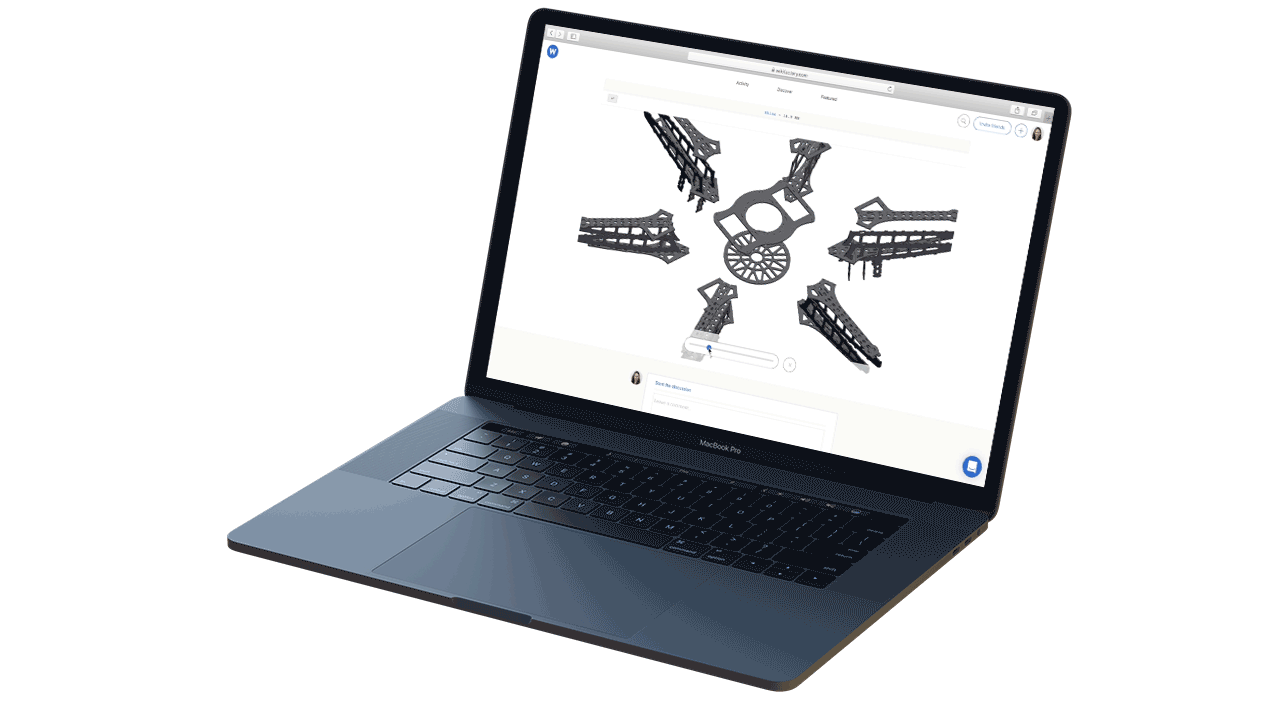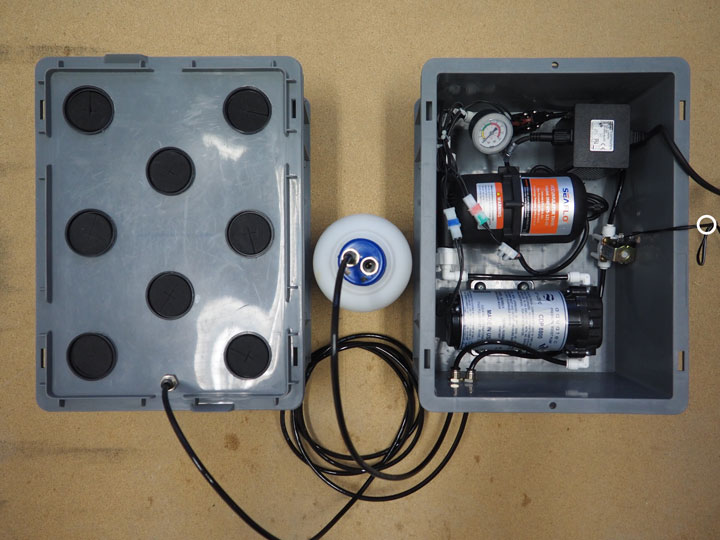Wikifactory Promoting Open Source Fabrication Projects for the First World Engineering Day
Global 3D Printing Day is celebrated on the 3rd of December, while International Women in Engineering Day was launched three years ago on June 23rd. But earlier this week, the first World Engineering Day was officially launched by UNESCO.
According to its the website, the purpose of World Engineering Day for Sustainable Development is to “highlight the achievements of engineers and engineering in our modern world and improve public understanding of how engineering and technology is central to modern life and sustainable development.”
The event celebrates, and promotes, the impact of engineers who are working to create solutions for sustainable development. The World Federation of Engineering Organizations (WFEO) proposed March 4th as the date for World Engineering Day, as it’s also the WFEO’s founding date. About 80 letters of support for the idea were received from international and national institutions, academies and national commissions, representing 23 million engineers, and at UNESCO’s 40th General Conference, the resolution was adopted to proclaim March 4th of every year as World Engineering Day.
“It highlights that engineers can play a critical role in developing new technologies, innovations and infrastructures that can help achieve Sustainable Development Goals, such as climate action and responsible production,” Wikifactory writes about World Engineering Day.
The first social platform for collaborative product development, Wikifactory allows distributed teams to prototype more quickly, manufacture smarter, and design together when developing and creating open source hardware projects via the web. Its online community spreads across 130 countries and includes teachers, technologists, students, engineers, makers, designers, and other creative problem solvers who are involved in a variety of applications, such as additive manufacturing, biotech lab equipment, mechatronics, and smart furniture. All together, the Wikifactory community has published more than 1,000 open source hardware design projects, covering everything from robots and drones to telescopes, lab equipment and biomaterials.
“On our platform we see a global network coming together that is changing the way that things are made. Thousands of production engineers and product developers on our platform are openly sharing engineering ‘recipes’ that enable anyone to produce products exactly where they are most needed, from drones that can sew seeds to combat deforestation to high pressure aeroponics systems that can grow plants in the air without the need for soil,” stated Christina Rebel, Co-Founder and Chief Growth Officer at Wikifactory. “What’s encouraging to see is that all of the projects on our platform contribute in one way or another to achieving each of the seventeen United Nations Sustainable Development Goals. And with digital fabrication technologies like 3D printing and CNC milling becoming more affordable, and now more accessible thanks to Wikifactory, the engineering community ensure the designs they are working on together can be manufactured immediately anywhere in the world, when and where they are most needed.”
That’s why Wikifactory wants to highlight “the ingenuity in all kinds of hardware and engineering projects” on #WorldEngDay2020 – specifically the projects that have a positive environmental or social impact. And with over one-third of the projects on the platform aligned with the new event’s 17 Sustainable Development Goals (SDG)s, this was obviously not difficult to do. Wikifactory wrote that “we welcome engineers to contribute with their skills to projects on Wikifactory, or even start their own.”
The SDGs are as follows:
- No poverty
- Zero hunger
- Good health and well-being
- Quality education
- Gender equality
- Clean water and sanitation
- Affordable and clean energy
- Decent work and economic growth
- Industry, innovation, and infrastructure
- Reduced inequalities
- Sustainable cities and communities
- Responsible consumption and production
- Climate action
- Life below water
- Life on land
- Peace, justice, and strong institutions
- Partnerships for the goals
Wikifactory provided 3DPrint.com with a list of some of its “innovative hardware projects” that bear mentioning for this year’s World Engineering Day. For instance, there’s Dronecoria, an efficient hardware solution for reforestation. The project, which drives SDGs 13 and 15, features an open source precision drone platform that’s equipped with seed balls, and automatically distributes them through the air in deforested areas.
Another Wikifactory initiative is Field Ready, which we have written about multiple times in the past. The project uses digital fabrication for rapid prototyping purposes in humanitarian crises, which helps the people in need move away from being dependent on shipped supplies and instead making the supplies themselves. For instance, the Water Hose Clamp is a fast and easy way to fix water leaking with 3D printing, and Latrine Rails, a low-cost emergency sanitation solution for those in wheelchairs, uses the same methodology of printing what they need when and where it’s needed. The Field Ready project is also responsible for creating the Rescue Airbag for search and rescue missions.
 There are multiple open source digital fabrication machine projects on Wikifactory, which align with World Engineering Day’s SDG 12. Working to create systems such as clay 3D printers, CNC mills, and even rotational casting machines, can be a big help in developing local fabrication economies. Additionally, the GrowStack Maker open source project is also linked to SDG 12, in addition to 13 and 15. It’s a High Pressure Aeroponics (HPA) system that can be built in less than a day and actually grows plants in the air with no soil and hardly any water.
There are multiple open source digital fabrication machine projects on Wikifactory, which align with World Engineering Day’s SDG 12. Working to create systems such as clay 3D printers, CNC mills, and even rotational casting machines, can be a big help in developing local fabrication economies. Additionally, the GrowStack Maker open source project is also linked to SDG 12, in addition to 13 and 15. It’s a High Pressure Aeroponics (HPA) system that can be built in less than a day and actually grows plants in the air with no soil and hardly any water.
While #WorldEngDay2020 is over now, that doesn’t mean that we can’t keep its purpose in the forefront of our minds all year long – the world needs more engineers with the right skills for sustainable development, and we can only get there by promoting engineering as a career that can help change the world for the better.
Discuss this story and other 3D printing topics at 3DPrintBoard.com or share your thoughts below.
[Images provided by Wikifactory]Subscribe to Our Email Newsletter
Stay up-to-date on all the latest news from the 3D printing industry and receive information and offers from third party vendors.
Print Services
You May Also Like
3D Printing Grows to $15.9B in 2024 Amid Shifting Industry Dynamics
The global additive manufacturing (AM) market reached $15.9 billion in calendar year 2024, according to “Q4 2024 3DP/AM Market Data and Forecast” from Additive Manufacturing Research (AM Research). Despite a...
3DPOD 247: LJ Holmes, Executive Director for the Center of Advanced Manufacturing and Materials at Harrisburg University
Executive Director for the Center of Advanced Manufacturing and Materials at Harrisburg University, Larry “LJ” Holmes is a pioneer in applying additive manufacturing to defense and other critical sectors. Part...
Thai Startup OsseoLabs to Cut Surgery Time with 3D Printed Magnesium Implants
A patient undergoing mandibular reconstructive surgery typically faces two separate operations: one to place a custom-fit titanium plate and another month later to remove it. But what if that second...
Japanese Advanced Manufacturing Capabilities Grow in Europe with Sodick’s Purchase of Prima Additive
The global economy is currently undergoing a reshuffling in terms of what gets manufactured where. In large part, this trend is being driven by new geopolitical alliances and the need...































